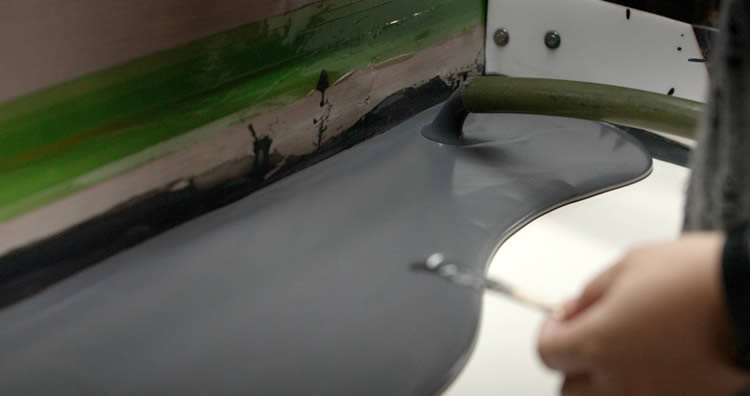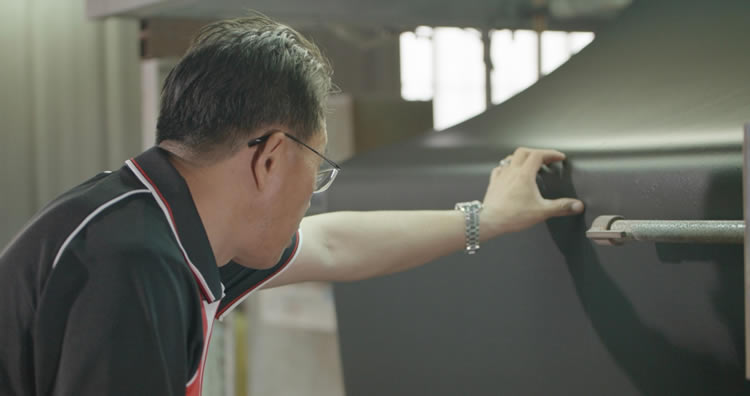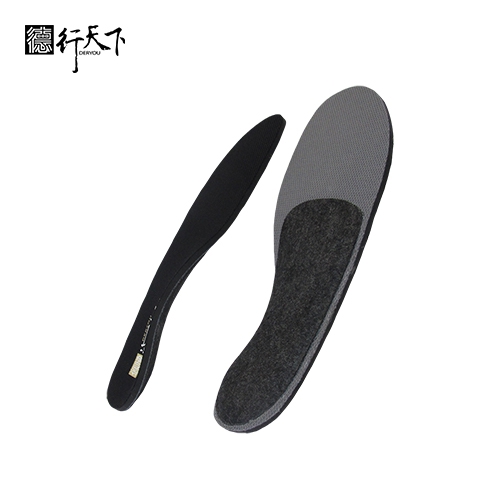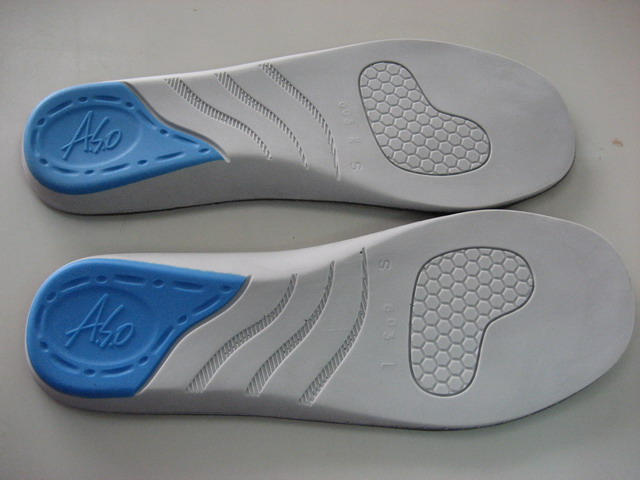Introduction – Company Background
GuangXin Industrial Co., Ltd. is a specialized manufacturer dedicated to the development and production of high-quality insoles.
With a strong foundation in material science and footwear ergonomics, we serve as a trusted partner for global brands seeking reliable insole solutions that combine comfort, functionality, and design.
With years of experience in insole production and OEM/ODM services, GuangXin has successfully supported a wide range of clients across various industries—including sportswear, health & wellness, orthopedic care, and daily footwear.
From initial prototyping to mass production, we provide comprehensive support tailored to each client’s market and application needs.
At GuangXin, we are committed to quality, innovation, and sustainable development. Every insole we produce reflects our dedication to precision craftsmanship, forward-thinking design, and ESG-driven practices.
By integrating eco-friendly materials, clean production processes, and responsible sourcing, we help our partners meet both market demand and environmental goals.


Core Strengths in Insole Manufacturing
At GuangXin Industrial, our core strength lies in our deep expertise and versatility in insole and pillow manufacturing. We specialize in working with a wide range of materials, including PU (polyurethane), natural latex, and advanced graphene composites, to develop insoles and pillows that meet diverse performance, comfort, and health-support needs.
Whether it's cushioning, support, breathability, or antibacterial function, we tailor material selection to the exact requirements of each project-whether for foot wellness or ergonomic sleep products.
We provide end-to-end manufacturing capabilities under one roof—covering every stage from material sourcing and foaming, to precision molding, lamination, cutting, sewing, and strict quality control. This full-process control not only ensures product consistency and durability, but also allows for faster lead times and better customization flexibility.
With our flexible production capacity, we accommodate both small batch custom orders and high-volume mass production with equal efficiency. Whether you're a startup launching your first insole or pillow line, or a global brand scaling up to meet market demand, GuangXin is equipped to deliver reliable OEM/ODM solutions that grow with your business.



Customization & OEM/ODM Flexibility
GuangXin offers exceptional flexibility in customization and OEM/ODM services, empowering our partners to create insole products that truly align with their brand identity and target market. We develop insoles tailored to specific foot shapes, end-user needs, and regional market preferences, ensuring optimal fit and functionality.
Our team supports comprehensive branding solutions, including logo printing, custom packaging, and product integration support for marketing campaigns. Whether you're launching a new product line or upgrading an existing one, we help your vision come to life with attention to detail and consistent brand presentation.
With fast prototyping services and efficient lead times, GuangXin helps reduce your time-to-market and respond quickly to evolving trends or seasonal demands. From concept to final production, we offer agile support that keeps you ahead of the competition.
Quality Assurance & Certifications
Quality is at the heart of everything we do. GuangXin implements a rigorous quality control system at every stage of production—ensuring that each insole meets the highest standards of consistency, comfort, and durability.
We provide a variety of in-house and third-party testing options, including antibacterial performance, odor control, durability testing, and eco-safety verification, to meet the specific needs of our clients and markets.
Our products are fully compliant with international safety and environmental standards, such as REACH, RoHS, and other applicable export regulations. This ensures seamless entry into global markets while supporting your ESG and product safety commitments.
ESG-Oriented Sustainable Production
At GuangXin Industrial, we are committed to integrating ESG (Environmental, Social, and Governance) values into every step of our manufacturing process. We actively pursue eco-conscious practices by utilizing eco-friendly materials and adopting low-carbon production methods to reduce environmental impact.
To support circular economy goals, we offer recycled and upcycled material options, including innovative applications such as recycled glass and repurposed LCD panel glass. These materials are processed using advanced techniques to retain performance while reducing waste—contributing to a more sustainable supply chain.
We also work closely with our partners to support their ESG compliance and sustainability reporting needs, providing documentation, traceability, and material data upon request. Whether you're aiming to meet corporate sustainability targets or align with global green regulations, GuangXin is your trusted manufacturing ally in building a better, greener future.
Let’s Build Your Next Insole Success Together
Looking for a reliable insole manufacturing partner that understands customization, quality, and flexibility? GuangXin Industrial Co., Ltd. specializes in high-performance insole production, offering tailored solutions for brands across the globe. Whether you're launching a new insole collection or expanding your existing product line, we provide OEM/ODM services built around your unique design and performance goals.
From small-batch custom orders to full-scale mass production, our flexible insole manufacturing capabilities adapt to your business needs. With expertise in PU, latex, and graphene insole materials, we turn ideas into functional, comfortable, and market-ready insoles that deliver value.
Contact us today to discuss your next insole project. Let GuangXin help you create custom insoles that stand out, perform better, and reflect your brand’s commitment to comfort, quality, and sustainability.
🔗 Learn more or get in touch:
🌐 Website: https://www.deryou-tw.com/
📧 Email: shela.a9119@msa.hinet.net
📘 Facebook: facebook.com/deryou.tw
📷 Instagram: instagram.com/deryou.tw
Pillow ODM design and manufacturing company in Taiwan
Are you looking for a trusted and experienced manufacturing partner that can bring your comfort-focused product ideas to life? GuangXin Industrial Co., Ltd. is your ideal OEM/ODM supplier, specializing in insole production, pillow manufacturing, and advanced graphene product design.
With decades of experience in insole OEM/ODM, we provide full-service manufacturing—from PU and latex to cutting-edge graphene-infused insoles—customized to meet your performance, support, and breathability requirements. Our production process is vertically integrated, covering everything from material sourcing and foaming to molding, cutting, and strict quality control.High-performance graphene insole OEM Thailand
Beyond insoles, GuangXin also offers pillow OEM/ODM services with a focus on ergonomic comfort and functional innovation. Whether you need memory foam, latex, or smart material integration for neck and sleep support, we deliver tailor-made solutions that reflect your brand’s values.
We are especially proud to lead the way in ESG-driven insole development. Through the use of recycled materials—such as repurposed LCD glass—and low-carbon production processes, we help our partners meet sustainability goals without compromising product quality. Our ESG insole solutions are designed not only for comfort but also for compliance with global environmental standards.Taiwan custom product OEM/ODM services
At GuangXin, we don’t just manufacture products—we create long-term value for your brand. Whether you're developing your first product line or scaling up globally, our flexible production capabilities and collaborative approach will help you go further, faster.High-performance graphene insole OEM factory Taiwan
📩 Contact us today to learn how our insole OEM, pillow ODM, and graphene product design services can elevate your product offering—while aligning with the sustainability expectations of modern consumers.China insole OEM manufacturer
MIT scientists have observed that when multiple starfish embryos spin up to the surface, they gravitate to each other and spontaneously assemble into an organized, crystal-like structure. Credit: Courtesy of the researchers, colorized by MIT News Their swirling, clustering behavior may someday inform the design of self-assembling robotic swarms. A starfish embryo, in its earliest stages, before it sprouts its distinctive tentacles, looks like a small bead and spins in the water like a miniature ball bearing Now, MIT researchers have discovered that when multiple starfish embryos spin up to the water’s surface, they naturally gravitate together and spontaneously assemble into a surprisingly organized, crystal-like structure. Even more curious still, this collective “living crystal” can exhibit odd elasticity, an exotic property whereby the spinning of individual units — in this case, embryos — triggers significantly larger ripples across the entire structure. This rippling crystal configuration can persist over relatively long periods of time before dissolving away as individual embryos mature, according to the scientists. “It’s absolutely remarkable — these embryos look like beautiful glass beads, and they come to the surface to form this perfect crystal structure,” says Nikta Fakhri, the Thomas D. and Virginia W. Cabot Career Development Associate Professor of Physics at MIT. “Like a flock of birds that can avoid predators, or fly more smoothly because they can organize in these large structures, perhaps this crystal structure could have some advantages we’re not aware of yet.” Beyond starfish, she says, this self-assembling, rippling crystal assemblage could be applied as a design principle, for example in building robot swarms that move and function collectively. “Imagine building a swarm of soft, spinning robots that can interact with each other like these embryos,” Fakhri says. “They could be designed to self-organize to ripple and crawl through the sea to do useful work. These interactions open up a new range of interesting physics to explore.” Fakhri and her colleagues published their results on July 13, 2022, in a study in the journal Nature. Co-authors include Tzer Han Tan, Alexander Mietke, Junang Li, Yuchao Chen, Hugh Higinbotham, Peter Foster, Shreyas Gokhale, and Jörn Dunkel. Spinning Together Fakhri says the group’s observations of starfish crystals was a “serendipitous discovery.” Her team has been studying how starfish embryos develop, and specifically how embryonic cells divide in the very earliest stages. “Starfish are one of the oldest model systems for studying developmental biology because they have large cells and are optically transparent,” Fakhri says. elastic starfish MIT scientists have found that starfish embryos spontaneously swim together at the surface to form large crystal-like structures that collectively ripple and rotate for relatively long periods of time before dissolving as embryos mature. Credit: Courtesy of the researchers The scientists were observing how embryos swim as they mature. Once fertilized, the embryos grow and divide, forming a shell that then sprouts tiny hairs, or cilia, that propel an embryo through the water. At a certain point, the cilia coordinate to spin an embryo in a particular rotational direction, or “chirality.” Tzer Han Tan, one of the group members, noticed that as embryos swam to the surface, they continued spinning, toward each other. “Once in a while, a small group would come together and sort of dance around,” Fakhri says. “And it turns out there are other marine organisms that do the same thing, like some algae. So, we thought, this is intriguing. What happens if you put a lot of them together?” In their new study, she and her colleagues fertilized thousands of starfish embryos, then watched as they swam to the surface of shallow dishes. “There are thousands of embryos in a dish, and they start forming this crystal structure that can grow very large,” Fakhri says. “We call it a crystal because each embryo is surrounded by six neighboring embryos in a hexagon that is repeated across the entire structure, very similar to the crystal structure in graphene.” Jiggling Crystals To understand what might be triggering embryos to assemble like crystals, the researchers first studied a single embryo’s flow field, or the way in which water flows around the embryo. To do this, they placed a single starfish embryo in water, then added much smaller beads to the mix, and took images of the beads as they flowed around the embryo at the water’s surface. Based on the direction and flow of the beads, the researchers were able to map the flow field around the embryo. They found that the cilia on the embryo’s surface beat in such a way that they spun the embryo in a particular direction and created whirlpools on either side of the embryo that then drew in the smaller beads. Mietke, a postdoctoral researcher in Dunkel’s applied mathematics group at MIT, worked this flow field from a single embryo into a simulation of many embryos, and ran the simulation forward to see how they would behave. The model produced the same crystal structures that the team observed in its experiments, confirming that the embryos’ crystallizing behavior was most likely a result of their hydrodynamic interactions and chirality. In their experiments, the scientists also observed that once a crystal structure had formed, it persisted for days, and during this time spontaneous ripples began to propagate across the crystal. “We could see this crystal rotating and jiggling over a very long time, which was absolutely unexpected,” she says. “You would expect these ripples to die out quickly, because water is viscous and would dampen these oscillations. This told us the system has some sort of odd elastic behavior.” The spontaneous, long-lasting ripples may be the result of interactions between the individual embryos, which spin against each other like interlocking gears. With thousands of gears spinning in crystal formation, the many individual spins could set off a larger, collective motion across the entire structure. The team is now investigating whether other organisms such as sea urchins exhibit similar crystalline behavior. They are also exploring how this self-assembling structure could be replicated in robotic systems. “You can play with this design principle of interactions and build something like a robotic swarm that can actually do work on the environment,” she says. Reference: “Odd dynamics of living chiral crystals” by Tzer Han Tan, Alexander Mietke, Junang Li, Yuchao Chen, Hugh Higinbotham, Peter J. Foster, Shreyas Gokhale, Jörn Dunkel and Nikta Fakhri, 13 July 2022, Nature. DOI: 10.1038/s41586-022-04889-6 This research was supported, in part, by the Sloan Foundation and the National Science Foundation.
A tiger shark (Galeocerdo cuvier) swimming at the surface with a biologging package attached to dorsal fin. This package records temperature, swimming speed, depth, body movement and video footage. Credit: Diego Camejo (Beneath the Waves) New research from marine biologists offers answers to a fundamental puzzle that had until now remained unsolved: why are some fish warm-blooded when most are not? It turns out that while (warm-blooded) fish able to regulate their own body temperatures can swim faster, they do not live in waters spanning a broader range of temperatures. The research therefore provides some of the first direct evidence as to the evolutionary advantage of being warm-blooded as well as underlining that species in this demographic — such as the infamous white shark and the speedy bluefin tuna — are likely just as vulnerable to changing global ocean temperatures as their cold-blooded relatives. Lucy Harding, PhD Candidate in Trinity College Dublin’s School of Natural Sciences, is the first author of the associated research article, which has just been published in the journal, Functional Ecology. She said: “Scientists have long known that not all fish are cold-blooded. Some have evolved the ability to warm parts of their bodies so that they can stay warmer than the water around them, but it has remained unclear what advantages this ability provided. “Some believed being warm-blooded allowed them to swim faster, as warmer muscles tend to be more powerful, while others believed it allowed them to live in a broader range of temperatures and therefore be more resilient to the effects of ocean warming as a result of climate change.” A white shark (Carcharodon carcharias) swimming at the surface with a biologging package attached to dorsal fin. This package records temperature, swimming speed, depth, body movement and video footage. Credit: Andrew Fox Lucy and her international team of collaborators assessed these two possibilities by collecting data from wild sharks and bony fish, as well as using existing databases. By attaching biologging devices to the fins of the animals they caught, they were able to collect information such as water temperatures encountered by the fish in their habitats; the speeds at which the fish swam for most of the day; and the depths of water the fish swam in. The results showed that warm-blooded fishes swim approximately 1.6 times faster than their cold-blooded relatives, but they did not live in broader temperature ranges. Nick Payne, Assistant Professor in Zoology in Trinity’s School of Natural Sciences, said: “The faster swimming speeds of the warm-blooded fishes likely gives them competitive advantages when it comes to things like predation and migration. With predation in mind, the hunting abilities of the white shark and bluefin tuna help paint a picture of why this ability might offer a competitive advantage. “Additionally, and contrary to some previous studies and opinions, our work shows these animals do not live in broader temperature ranges, which implies that they may be equally at risk from the negative impacts of ocean warming. Findings like these — while interesting on their own — are very important as they can aid future conservation efforts for these threatened animals.” Reference: “Endothermy makes fishes faster but does not expand their thermal niche” by Lucy Harding, Andrew Jackson, Adam Barnett, Ian Donohue, Lewis Halsey, Charles Huveneers, Carl Meyer, Yannis Papastamatiou, Jayson M. Semmens, Erin Spencer, Yuuki Watanabe and Nicholas Payne, 30 June 2021, Functional Ecology. DOI: 10.1111/1365-2435.13869 The research was supported by Science Foundation Ireland.
The findings shed light on the mechanism by which drugs such as ibuprofen and aspirin alleviate flu symptoms and suggest that the drugs may even improve survival rates. The researchers made a breakthrough discovery of specific airway neurons in mice that alert the brain about the flu virus. A recent study in mice has revealed that a small population of airway neurons is responsible for alerting the brain about a flu infection The results help explain how drugs like ibuprofen and aspirin reduce flu symptoms The findings could help scientists develop more-effective flu therapies A recent study led by researchers at Harvard Medical School sheds new light on how the brain becomes aware of the presence of an infection in the body. The team, through their study of mice, uncovered that a small group of airway neurons play a crucial role in informing the brain about a flu infection. They also observed evidence of a secondary pathway from the lungs to the brain that becomes active during later in the infection. The study was recently published in the journal Nature. Although most people are sick several times a year, scientific knowledge of how the brain evokes the feeling of sickness has lagged behind research on other bodily states such as hunger and thirst. The paper represents a key first step in understanding the brain-body connection during an infection. “This study helps us begin to understand a basic mechanism of pathogen detection and how that’s related to the nervous system, which until now has been largely mysterious,” said senior author Stephen Liberles, professor of cell biology in the Blavatnik Institute at HMS and an investigator at Howard Hughes Medical Institute. The findings also shed light on how nonsteroidal anti-inflammatory drugs such as ibuprofen and aspirin alleviate influenza symptoms. If the results can be translated into humans, the work could have important implications for developing more-effective flu therapies. An Infectious State of Mind The Liberles lab is interested in how the brain and body communicate to control physiology. For example, it has previously explored how the brain processes sensory information from internal organs, and how sensory cues can evoke or suppress the sensation of nausea. In the new paper, the researchers turned their attention to another important type of sickness that the brain controls: sickness from a respiratory infection. During an infection, Liberles explained, the brain orchestrates symptoms as the body mounts an immune response. These can include broad symptoms such as fever, decreased appetite, and lethargy, as well as specific symptoms such as congestion or coughing for a respiratory illness or vomiting or diarrhea for a gastrointestinal bug. The team decided to focus on influenza, a respiratory virus that is the source of millions of illnesses and medical visits and causes thousands of deaths in the United States every year. Through a series of experiments in mice, first author Na-Ryum Bin, HMS research fellow in the Liberles lab, identified a small population of neurons embedded in the glossopharyngeal nerve, which runs from the throat to the brain. Importantly, he found that these neurons are necessary to signal to the brain that a flu infection is present and have receptors for lipids called prostaglandins. These lipids are made by both mice and humans during an infection, and they are targeted by drugs such as ibuprofen and aspirin. Cutting the glossopharyngeal nerve, eliminating the neurons, blocking the prostaglandin receptors in those neurons, or treating the mice with ibuprofen similarly reduced influenza symptoms and increased survival. Together, the findings suggest that these airway neurons detect the prostaglandins made during a flu infection and become a communication conduit from the upper part of the throat to the brain. “We think that these neurons relay the information that there’s a pathogen there and initiate neural circuits that control the sickness response,” Liberles said. The results provide an explanation for how drugs like ibuprofen and aspirin work to reduce flu symptoms — and suggest that these drugs may even boost survival. The researchers discovered evidence of another potential sickness pathway, this one traveling from the lungs to the brain. They found that it appears to become active in the second phase of infection as the virus infiltrates deeper into the respiratory system. This additional pathway doesn’t involve prostaglandins, the team was surprised to find. Mice in the second phase of infection didn’t respond to ibuprofen. The findings suggest an opportunity for improving flu treatment if scientists are able to develop drugs that target the additional pathway, the authors said. A Foundation for Future Research The study raises a number of questions that Liberles and colleagues are eager to investigate. One is how well the findings will translate to humans. Although mice and humans share a lot of basic sensory biology, including having a glossopharyngeal nerve, Liberles emphasized that researchers need to conduct further genetic and other experiments to confirm that humans have the same neuron populations and pathways seen in the mouse study. If the findings can be replicated in humans, it raises the possibility of developing treatments that address both the prostaglandin- and nonprostaglandin pathways of flu infection. “If you can find a way to inhibit both pathways and use them in synergy, that would be incredibly exciting and potentially transformative,” Liberles said. Bin is already delving into the details of the nonprostaglandin pathway, including the neurons involved, with the goal of figuring out how to block it. He also wants to identify the airway cells that produce prostaglandins in the initial pathway and study them in more depth. Liberles is excited to explore the full diversity of sickness pathways in the body to learn whether they specialize for different types and sites of infection. A deeper understanding of these pathways, he said, can help scientists learn how to manipulate them to better treat a range of illnesses. Reference: “An airway-to-brain sensory pathway mediates influenza-induced sickness” by Na-Ryum Bin, Sara L. Prescott, Nao Horio, Yandan Wang, Isaac M. Chiu and Stephen D. Liberles, 8 March 2023, Nature. DOI: 10.1038/s41586-023-05796-0 The study was funded by the National Institutes of Health, the Chan Zuckerberg Initiative, a Banting Postdoctoral Fellowship, and a Harvard Medical School Goldberg Fellowship. Liberles is a consultant for Kallyope.
DVDV1551RTWW78V
Custom foam pillow OEM in Indonesia 》reducing complexity, increasing product valueCustom graphene foam processing factory Taiwan 》supporting your ESG goals through sustainable productionChina custom product OEM/ODM services 》where craftsmanship meets innovation and ESG values
限會員,要發表迴響,請先登入


